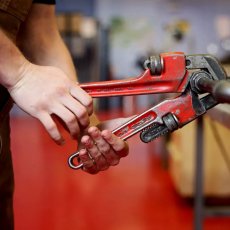Abstract It would be difficult to find a material that matches the popularity of glass among engineers and architects. The great importance that glass has attained compared to other materials is associated with its ability to transmit light and to provide a transparent environment. Using this transparent environment and cap- turing the warmth and brightness of the sun inside a building was a major problem up to the beginning of the twentieth century. In the first half of the twentieth century, due to introduction of new materials to the building industry, such as steel and concrete, as well as more complex structural solutions, integration of glass into the building envelope was made increasingly possible and changed its position from small openings in the façade to considerably large surfaces covering most of the building envelope. In this chapter a brief history of utilization of glass into the building exterior systems is presented. Also different architectural glazing systems that are currently being used are introduced and described.
From Wall to Skin
Incorporation of glazed elements into the building exterior is parallel to demate- rialization of the building façade, which is also coupled with relieving the façade from its load-bearing function and introducing the frame elements which transferred the load to the building foundation. Ultimately, dematerialization of the façades confined their role to being just a skin boundary around the building, separating the inside and outside environments, rather than load-bearing structural members, the boundary that we now refer to as the building envelope.
Although before the middle of the twentieth century there have been numerous examples of glass construction, mostly for coverings of railway stations, green- houses, passages and early modernism of the 20s and 30s that resulted in large private glass houses, the real breakthrough in glass architecture came after world war II when economic, technological and aesthetic factors all together forced the rapid spread of utilizing glass as a prominent building material. It was at this time that technical advances in glass manufacturing, along with the sensation of modern characteristics embodied in it, made the glazed envelope the symbol of modern architecture. Towering glazed office buildings that were used as the headquarters of giant multinational companies represented growth, confidence and development within those companies, as they still do. Even within city scale a silhouette of high- rise glazed skyscrapers, sharply reflecting the sun during the day and illuminating light as a sign of livelihood during night became signatures of wealth and prosperity.
The leading examples of modern glass architecture were first realized in the United States which, while Europe was dealing with problems of a post war environment, was enjoying the luxury of a reasonable economic growth suitable for investment. More importantly, at the same time, during the years of the Third Reich, it became home to many of the avant-garde immigrants, such as Mies van der Rohe and Walter Gropius (Institut Internationale Architektur-Dokumentation
Mies van der Rohe, as head of the Illinois Institute of Technology in Chicago and given the task of designing the new university campus, had the chance to reinterpret the idea of a “curtain wall” which later became a distinguished aspect of the high-rise buildings he envisioned. One of the first implementations of glazed curtain wall systems was the façade of his buildings constructed during the 80s along the Lake Shore Drive in Chicago.
Later advances in load-bearing silicon (structural silicon glazing) and other fixing techniques made possible the cladding of rooftops and more complex shapes with glass, allowing a smooth firm skin, eliminating the panel frames and maxi- mizing the glazing of the envelope. The Pacific Design Center designed by Cesar Pelli in 1975 was one of the first structures benefiting from an all glazed envelope. Other leading examples of modern glass architecture following the Second World War that were realized in the US are: the skyscrapers ‘Lever Building’.
While single layer glass panels are the source of considerable heat loss during winter, and direct solar irradiation infiltrating the glazed envelopes may impose considerable energy demand on building services, in the early days of modern architecture, the disadvantageous energy loss in winter and overheating in the summer were resisted passively with tinted glass and by actively using (mainly) energy intensive mechanical air conditioning. After the energy crisis of the 70s double glazing against energy loss and reflective glazing against overheating were increasingly employed. In the meantime the glass industry was able to put double glazing with excellent thermal values on the market, thereby extensively reducing the significance of heat loss. However, undesirable heat gains due to solar radiation continued to pose problems.
Double-skin facades proved to be a possible solution to this problem. These glazed envelope systems are characterized by the addition of a single glazed skin in front of the double glazed building façade, where a shading device can be located in the cavity between the two façades to control the heat gain due to solar radiation and controlled ventilation between the two layers can be efficiently utilized for the indoor environment.
From Wall to Skin
In the early 90s high quality façade constructions, in particular double-skin building envelopes, were developed and often promoted as the definitive solution to energy loss. Forerunners of double-skin constructions are the projects by Le Corbusier for the not awarded competition design for the People’s Palace in Geneva, 1927, and for the building of the Centro-Soyus in Moscow, 1929. The impetus for this solution probably came from traditional double windows which Le Corbusier knew from his country, Switzerland. Double-skin façades had however already been built prior to this but had been recognized as works of civil engineering and not works of architecture. The production hall of the Steiff Company, Giengen on the Brenz, 1903 by R. Steiff, and the ‘Hallidie Building’, San Francisco, 1915–1917 by
W. Polk, are early examples of double-skin glass façades.
Double façades are still a very interesting point of discussion in building envelopes in terms of materials, ventilation, shading, translucency and compati- bility with the building structure.
Curtain Walls
A curtain wall is defined as an exterior wall on a building, which does not support the roof or floor loads but is connected to the structural frame, and is an element of the larger building envelope system. While Curtain Walling encompasses systems that use various material claddings such as metal panels and stone, one of the most popular configurations is a metal frame assembly glazed with architectural glass. They usually consist of vertical and horizontal structural members, known as mullions and transoms respectively, connected together and anchored to the sup- porting structure of the building and in-filled with the cladding panels, to form a lightweight, space enclosing continuous skin, which provides, by itself or in con- junction with the building construction, all the normal functions of an external wall, but does not take on any of the load-bearing characteristics of the building structure. Glass Curtain wall systems have become a common building com- ponent as mass load-bearing wall systems slowly transitioned and were replaced with cavity wall systems during the twentieth century and lightweight wall system options were needed. Curtain walls have many various functions, some of which are harder to achieve effectively than others. These wall systems have requirements which include structural load transfer and resistance, water infiltration protection, air infiltration control, condensation prevention, energy management, sound attenuation, safety, maintainability, constructability, durability, aesthetics, and economic viability.
Description of curtain walling types:
The classification of types of curtain walling varies but mainly the following classification is considered which is based on manufacturing, installation and mechanical features of the curtain wall system:
Stick System Curtain Walling
Stick curtain wall system is one of the most primitive and at the same time simple curtain walling systems. In this system the mullions and transoms are long elements mainly from extruded aluminum or cold rolled steel with coating for protection against oxidation and other environmental attacks. The main characteristic of this system is that the components are cut and machined in the factory and the assembly will be completely performed onsite. shows the arrangement of the stick curtain wall system. The procedure of onsite assembly is done by first erecting the vertical mullions and connecting them to the structure at the floor slab followed by placement of the horizontal transoms as demonstrated. The distances between the mullions and transoms are defined based on the dimensions of the curtain wall panel. The infill panels will be finally added in between the frames mainly composed of glass panels, however other materials such as metallic or Photovoltaic panels may be used as infill panels. The panels, either working as openings or fixed panels, need to be properly insulated. This will be guaranteed using elastic gaskets that are held in place and under pressure using pressure plates. Stick curtain walling is a highly adaptable system that can be used for high-rise glass towers as well as single story shop fronts and, although the assembly speed is rather low compared with preassembled systems, it is suitable for irregular shapes
since it can move well with the building frame. The main disadvantage of stick curtain wall systems is associated to its performance and quality control. This is because the assembly is performed onsite and the performance of the systems remains highly dependent on the skills of the assembly and installation team.
Unitized Curtain Walling
A unitized curtain wall system is currently the most commonly practiced curtain wall system for high-quality glazed envelopes. The comprising modules of unitized system are preassembled glazing panels that are manufactured in controlled factory conditions. These units are composed of a metallic frame—mainly aluminum or steel—that surrounds one or multiple glass layers as well as other materials. The units are usually a story high and connected to the building at every floor slab with prepositioned brackets or a previously installed substructure. The framing system is also positioned to be fastened to the surrounding units with special joints with pressured elastic gaskets to provide an adequately insulated envelope system. schematically demonstrates the unitized curtain wall system. Although the framing system in unitized curtain wall is much more complex and the direct cost of the system is higher, through a broader perspective, faster and easier installation and fewer onsite activity makes this system cost effective. Another advantage of unitized systems is associated with their comparatively better per- formance and quality control.
The installation team of unitized curtain wall systems are usually provided by the manufacturer or selected with its agreement, and instructions need to be provided for proper installation of the system, how to change the damaged units and maintenance of the system. It is also common for these systems to be delivered with some sort of guarantee, depending on the manufacturer.
Panelized Curtain Walling
Panelized curtain wall systems are quite similar to unitized system with the dif- ference that the modules of panelized curtain wall systems are usually very much larger than unitized systems and they are mostly used when application of the panels directly on the building structure is possible. These modules are again prefabricated panels but with dimensions usually equal to story height in vertical direction and bay span in width. Fixing the panels close to the columns reduces problems due to deflection of the slab at mid-span, which affects stick and unitized systems.
Application of materials other than glass such as metallic plates, composite materials, terra cotta or even precast concrete panels is more common in panelized systems with respect to other curtain wall systems, the panels may even include a substructure framework that is used to support different cladding material like stone and masonry.
Structural steel panelized walls are known as ‘truss walls’ in North America. Aluminum or galvanized steel skins are generally fixed to the frame with insulation in the cavity. The wall construction is then completed by a plasterboard lining and external cladding.
As mentioned earlier, the differences between unitized and panelized systems are mainly associated with dimensions and weight, which is why some choose not to differentiate between the two systems in categorizing curtain wall systems. How- ever, due to fundamental changes that these differences impose on the manufac- turing process, connection details, assembly and installation, here they are considered as a separate class of curtain wall systems.
Spandrel Panel Ribbon Glazing
In spandrel ribbons glazing, long continuous glazed panels are fixed between spandrel panels that are usually fixed to the building floor slab. The main purpose of using spandrel panel ribbon glazing is usually aesthetical and when having a horizontal strip appearance at every story level is desired by the architects.
The primary support for this system is the spandrel panels that are situated below and above the glazed surface and are fixed to the building floor slab. The spandrel panels may be of various materials such as prefabricated metallic or composite panels or precast concrete units. These units will be fixed to the floor slab via joining brackets and the glazed panels will be fixed between the spandrel panels. The glazed parts of spandrel ribbon curtain wall systems may be assembled onsite with horizontal transoms fixed to spandrel panels that later accommodate glass panes. If necessary for better fitting of the glass panel, vertical mullions may be added in between horizontal transoms. The glazed parts may also be of pre-glazed factory assembled units that will be fixed on bottom and top to the spandrel panels and on the sides to one another. Inserting various types of shading devices, rain screen panels etc. over the glazed surfaces are easily achievable in spandrel ribbon glazing. Due to the special arrangement of the components in this system of glazing it is easy to provide horizontal isolation between the units in different story levels using sliding joints. This can be very helpful for seismic behavior of the curtain wall system as it will be later shown in Chap.
Structural Sealant Glazing
In structural sealant glazing systems, instead of using mechanical elements such as pressure plates and gaskets, the infill glass panels are fixed to a primary frame system using structural silicon sealants during the factory assembly. Since in structural sealant curtain walls, there is no need for external metallic elements to put the glazing panels in place and under pressure, it is possible to cover almost the total external surface of the envelope with glazing panels. This system of curtain walling is attractive for architects who look for smooth external glazed surfaces. The attachment of these units together and to the main structure can be performed in different ways similar to stick, unitized and spandrel ribbon glazing. The units can be completely preassembled in the factory and similar to unitized systems installed directly on the building structure and fastened together or a substructure of mullions and transoms can be assembled on site and later partly fabricated units composed of glazing panels and a border frame can be bolted on or fastened to the substructure which is similar to a stick curtain wall system.
Structural sealant curtain walls have been used in the United States since the 80s, where in the first proposed systems the glazing panels were directly attached to the fames on site, but due to low performance, inability of quality control and problems concerning maintenance and replacement of damaged panels, this type of assembly is no longer acceptable and the structural silicon sealants need to be performed in the factory and under controlled conditions.
It is customary to assist the structural sealant patches with some mechanical supports, mainly in the form of resting brackets on the lower frame and withholding the weight of the infill panels. This would reduce the size of the sealant bed and sometimes make it possible to use structural sealant patches only on two sides and leave the rest to non-structural sealants.
Structural sealant glazing a suitable system for externally complex facet enve- lopes is commonly referred to as crystal cladding, where the exterior surface is required to be free from protrusions and top over framing. However during the night, and especially when interior lighting is present, the framing system will be visible from outside and the continuously uniform glazed surface will no longer be available. This curtain wall system is usually used on prestigious buildings and may be produced in standard predefined dimensions or tailor cut systems for buildings with irregular and special envelope panels, and as mentioned earlier the framing system may be similar to both stick and unitized systems and any of the previous types of curtain walling and ribbon glazing could incorporate structural silicon glazed elements.
Point-Fixed Structural Glazing—Bolted Assembly and Patched Assembly
Structural glazing curtain wall systems are envelope systems that provide maximum transparency. The first and foremost feature of these systems is that the support systems have become minimized to achieve maximum external glazing and internal transparency. In both systems, sheets of toughened/laminated glass are assembled with special brackets to a secondary support substructure creating a highly trans- parent envelope system with a uniform and continuous external surface. These systems are usually incorporated in envelopes which require a minimum amount of framing for a given glass area and as façade and coverings of large internal spaces such as mall entrances, atriums and continuous external skins that are largely separated from the building floor slab and its main structure.
The supporting structure can be in various configurations such as space struc- tures, mullions and transoms, orthogonal substructure net, cable supported struc- tures etc. and all these systems follow a main goal: that is to maximize transparency. Recently, in close collaboration with the glass industry, achievements have been made to even use glass pillars as the supporting structure. In such cases the glass pillars are in the form of long glass plates that act as a support for forces that are applied normal to the surface of the envelope system as well as its weight. The height of the glass pillars is equal to the height of the envelope system, while its thickness and width are designed according to the applied loads predicted and structural design principles. The envelope panels will be connected at certain points to the supporting structure using connection brackets. Usually every bracket supports a number of adjacent panels—typically four—and the gaps between the panels are weather sealed on-site using wet-applied sealant.
There are two main types of point-fixed structural glazing systems: Bolted assembly and Patched assembly. In both systems the glazing panels are fixed to the substructure at the corners of the panels—in case of large panels attachments are also applied in the middle of the panel borders—, the difference between the two concerns the fixture of the glazing panels to the attachment brackets. In patched assembly the corners of the glass panels are held in place by steel brackets applied at both sides of the glazing panel and held together by applying a pressure. For better safety usually the lower brackets have underlying flanges for mechanically withholding the weight of the panels. The brackets are usually in the form of rectangular patch plates but adopting more intricate shapes for aesthetical reasons is becoming more common among the manufacturers of point-fixed glazing systems. After the installation of the glazing panels the space between the adjacent panels will be weatherproofed on-site using wet sealants or with a combination of elastic gaskets and wet sealants in case the space between the panels exceeds a few centimeters.
All four borders of the glass panels are sealed with either weather-proof or structural sealants depending on the load transfer system intended by the designers. Although as mentioned earlier mechanical flanges will sometimes be added to assist withholding the weight of the envelope system, the principle behind the design of the fittings in patch plate point glazed envelopes is the friction developed between the Plated/Gasket/Glass interfaces that are produced by the pressure applied over these surfaces by the patch plates. Adhesives may also be applied to enhance the friction between the surfaces.
In contrast to patched assembly systems which mainly rely on friction between certain elements of the fixing system and glass pane, the bolted assembly point- fixed glazed envelopes are connected to their supporting structure completely through mechanical fastening. This would provide a broader margin of safety for using this system in various orientations and non-vertical positions. In bolted assembly systems—commonly referred to as spider systems—the glass panels are provided with holes at their corners and the connection bracket is fastened to the glass through these holes by special bolts. There are two main categories for connection bolts: countersunk fixing and clamp fixing. In clamped fixing the top flange of the bolt is applied over the external surface of the glass, while in coun- tersunk fixing the external end of the bolt is embedded inside the glass and is attached to the fixing hole in a conical shape bringing the end of the bolt in the exact same surface of the glass. In both cases extensive consideration is made to avoid any direct contact between the glass and metallic parts of the bolt which would result in formation and spreading of cracks within the glass pane. Using special bolts that can accommodate more than one layer of glass, it is possible to use double or triple glazed insulated units as the envelope panels.
The entire weight of the glazing panels is transferred to the connection bracket through the bolts. A certain level of flexibility is necessary in the connection bolts, especially with respect to rotation, to avoid stressing the glass after the installation and in the more contemporary designs of the fixings where the bolts remain unconfined in rotary degrees of freedom using ball-type joints. The main design considerations for fixing bolts are described below:
Avoiding contact between the metallic components and the glass Reducing stress concentration in the glass pane near the holes Providing necessary flexibility to avoid pre-stressing the system
Guaranteeing a uniform distribution of stress at the contacting surfaces around connection points
As formerly mentioned the fixing bolts transfer the forces from the envelope panels to the connection brackets. The connection bracket (spider bracket) consists of usually four arms attached together and fastened to the supporting structure (the number of arms is associated with the number of glass panels connected at every point and the discretization scheme of the envelope). Since every glass panel is independently attached to the support structure there are no limitations regarding height and width for using spider glazing systems, especially when the spaces between the glazing panels is not filled with mechanically resistant sealants and unnecessary exchange of forces that might be the result of thermal expansion or deformations in the substructure is considered improbable.








 Vectora Design
Vectora Design